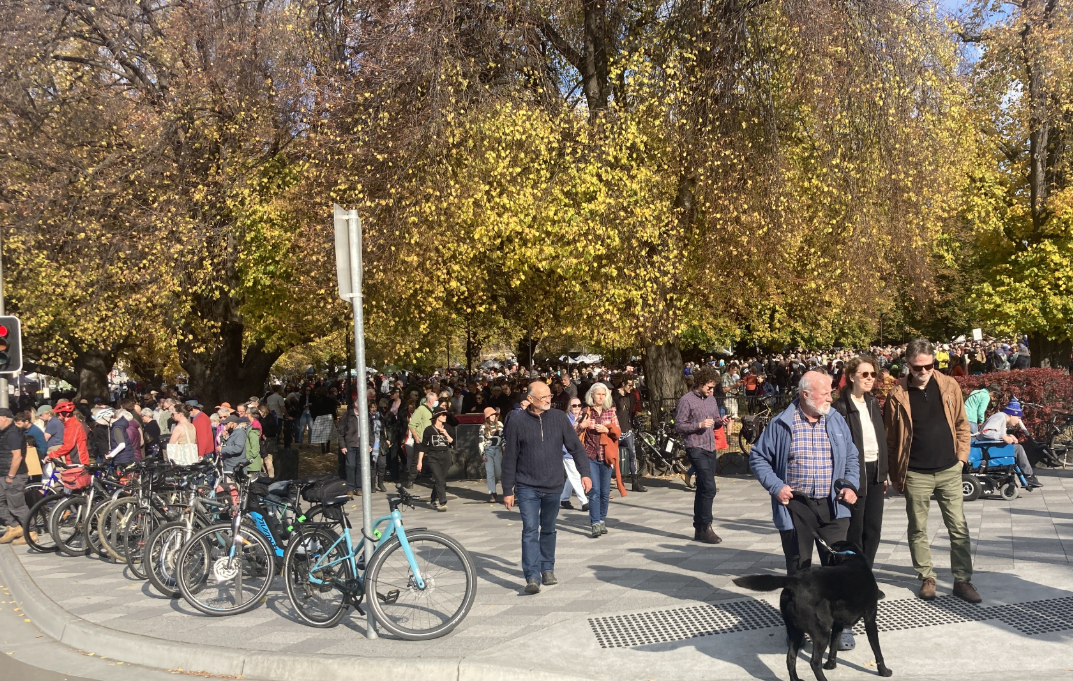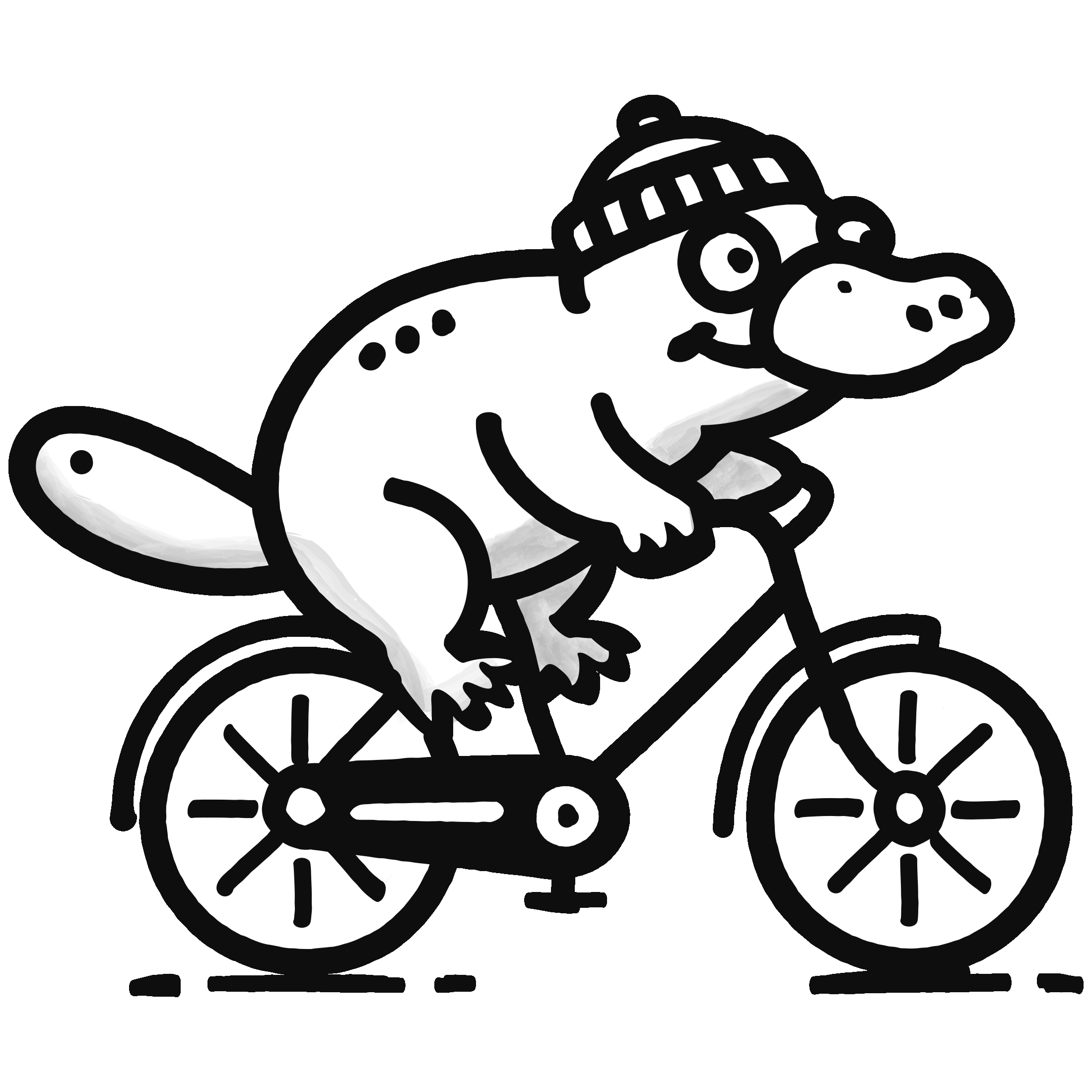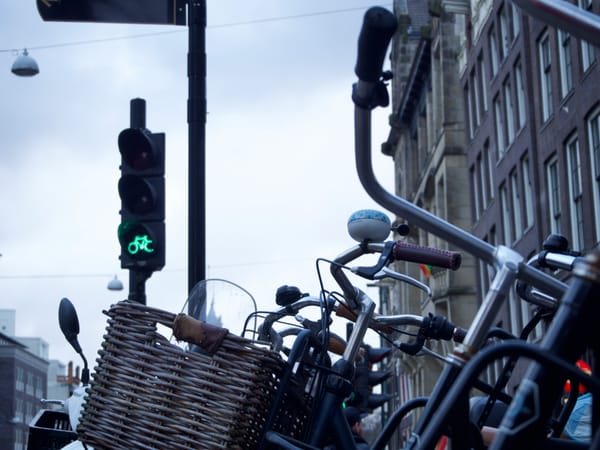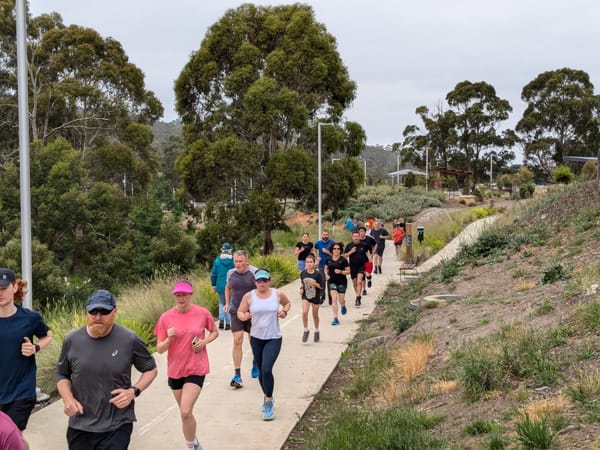Let's build active transport into our daily lives - for our health and our city!

Dr Anna Johnston is a local haematologist, long-time cycling commuter, and spokesperson for Streets People Love Hobart. In this piece, she explores how the way we design our streets impacts our health, drawing lessons from cities around the world.
A recent trip to the US reminded me what is at stake in the debate about our urban landscape and how we travel through it. Los Angeles is a city dominated by cars – to the detriment of the city’s beauty, and the way of life and health of the people who live there.
For the people who come second fiddle, the consequences are substantial in terms of congestion, pollution and health. It is estimated the average LA driver spends 100 hours a year stopped in traffic. LA is the city with the most fatal air pollution in the entire USA, with a total of 1341 estimated annual deaths.
There were 336 road traffic-related deaths last year and LA is the second deadliest US city for pedestrian deaths.
Hobart is clearly not LA. Unfortunately though, the trends I observed are occurring here too. Car movements are increasing in Hobart, with a 15 per cent increase in private vehicle trips for weekday travel over the past five years. Per capita Hobart has the highest rate of vehicle trips by car of all Australian capital cities. This is part of a disturbing Australia-wide trend, which creates congestion and damages our health through air pollution and reduced physical activity, in addition to the road toll.
Where I live has lots of water, the changes happen gradually, and we then stop noticing them until we get into real trouble. Consider how children get themselves to school. In the 1970s most children walked and cycled. Now most of these walking and cycling trips have been replaced by car trips. Now only about one third of Australian children are regularly walking or cycling to school. Research indicates that walking and cycling to get to local destinations, such as school, plays an important role in children meeting recommended levels of physical activity. So, it won’t come as a great surprise that three quarters of children are not meeting these recommendations.
The consequences of less activity for children are serious. Regular activity supports brain development and babies must have developmentally active childhoods to maintain a healthy weight. Being active improves sleep, mental health, and attention, and the absence of these are major reasons for this dramatic shift and spike in child health and mental health trends, but traffic and social safety concerns are important factors.

However, we have a choice and Recognising the perils of our current trajectory we need to create environments that allow our children (and ourselves) a healthier, more active future. High levels of car travel are not an inevitable consequence of living in a wealthy country with high car ownership. We can look to many other societies to see a different way.
Active transport to school is highest in Japan at 98 per cent and the Netherlands achieves 87 per cent. Even Great Britain is doing better than us at 52 per cent compared to our meagre 25 per cent. It is possible in Hobart. I have seen my own teenage children grow in confidence and independence by being able to get places independently by bicycle and this reduces the pressure on busy working parents. However, we are lucky to live relatively close to school and sporting hubs and moderately safe routes are possible. Such routes remain rare and should be safer than they currently are if more kids are going to jump on bikes.

There is widespread concern about how we can deal with the burden of chronic illness associated with sedentary lifestyles and unhealthy diets — cardiovascular disease, diabetes, overweight and depression to name a few. One very significant thing we can do is re-engineer the way we live to allow us to move more in the course of our daily activities. This is a magnificent thing called incidental exercise. And it is much better than a gym membership to keep you fit and a healthy weight over the longer term. The great added bonus is that this re-engineering also makes our cities nicer places to be.
Transforming Collins St is a modest but important pilot project to create a safe cycling route gathering cyclists coming from South Hobart, Sandy Bay and West Hobart into the city. Up to 35 per cent of people report they would like to cycle but are too worried about dealing with traffic to give it a go. We need projects like this to allow ourselves and our children the opportunity of a healthier future.
It goes without saying that not everyone can cycle to school or work for many reasons, which may include disease or limited mobility. Of course we need cars, and cars will still be vital for transport in Hobart. But we also need to drastically improve our transport and street planning to accommodate that many people will have hybrid journeys made up of combinations of all transport modes.

My recent experience in LA tells me what we have to lose if we do not champion change like this in our city. The overwhelming weight of evidence in Australia and overseas tells us that such initiatives bring much overall good for our community, in terms of health and a better street environment — which is actually beneficial to many business owners, with safer and more pleasant streets increasing visitation. I look forward to seeing this transformation, and hopefully many more, that will allow Hobartians to reap the benefits of active transport and a more pleasant CBD for years to come.
Written by Dr Anna Johnston (a local haematologist, long-term cycling commuter and spokesperson for Streets People Love Hobart.)





